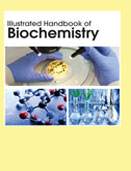Handbooks

Biochemistry is the branch of science that explores the chemical processes within and related to living organisms. It is a laboratory based science that brings together biology and chemistry. By using chemical knowledge and techniques, biochemists can understand and solve biological problems. This illustrated handbook focuses on processes happening at a molecular level. It focuses on what?s happening inside our cells, studying components like proteins, lipids and organelles. It also looks at how cells communicate with each other, for example during growth or fighting illness.
Biochemistry is a field that has immense importance today. Biochemistry is the study of the structure and function of biological molecules such as proteins, nucleic acids, carbohydrates and lipids, and also used to describe techniques suited to understanding the interactions and functions of biological molecules, including traditional techniques such as Western blotting, co-immunoprecipitation, and chromatography methods. One can understand all the chemical reactions happening at the molecular level in a living cell or living being.
Illustrated Handbook of Biochemistry deals with body substance like enzymes, carbohydrates, amino acids, fats, proteins, hormones, DNA, RNA, and describes their origin, formation, function, deficiency symptoms etc. It tries to explain life in terms of biochemical reactions. The importance of biochemistry can be seen from the fact that it is used in many daily activities. It is used in clinical diagnosis, manufacture of various biological products, treatment of diseases, in nutrition, agriculture etc. The study of biochemistry helps one understand the actual chemical concepts of biology. That is the functioning of various body processes and physiology by uses of biomolecules. Biochemistry has spread its roots in many areas of everyday life. This includes agriculture, environment and health. Besides this, biochemistry has its applications in clinical and forensic science, the pharmacological industries etc. New drugs are found out, preventive medicines are found and remedy for many ailments are found out with the help of Biochemistry. Progress in the biochemical understanding of disease and complex molecular structures has led to medical applications including the screening of unborn babies for disease, investigation of possible cures for illnesses such as cancer and AIDS, and the formulation of new and improved medicines. Biochemistry also contributes to protecting the environment, by combating pollution and designing biocompatible products. The genetic engineering of plants has led to advances in agriculture which include crop improvement and resistance to pests and disease. Biochemistry is often a collaborative field, requiring biochemists to work and communicate as a team with professionals from a variety of disciplines to achieve their goals.
Illustrated Handbook of Biochemistry provides the study of chemical constituents of living cells and also the reactions and procedures they undergo. This Handbook is intended to students and researchers involved in the areas of biology, medicine, nutrition, agriculture, physiology, genetics, and immunology; practically all of the primary specialities on the life sciences.